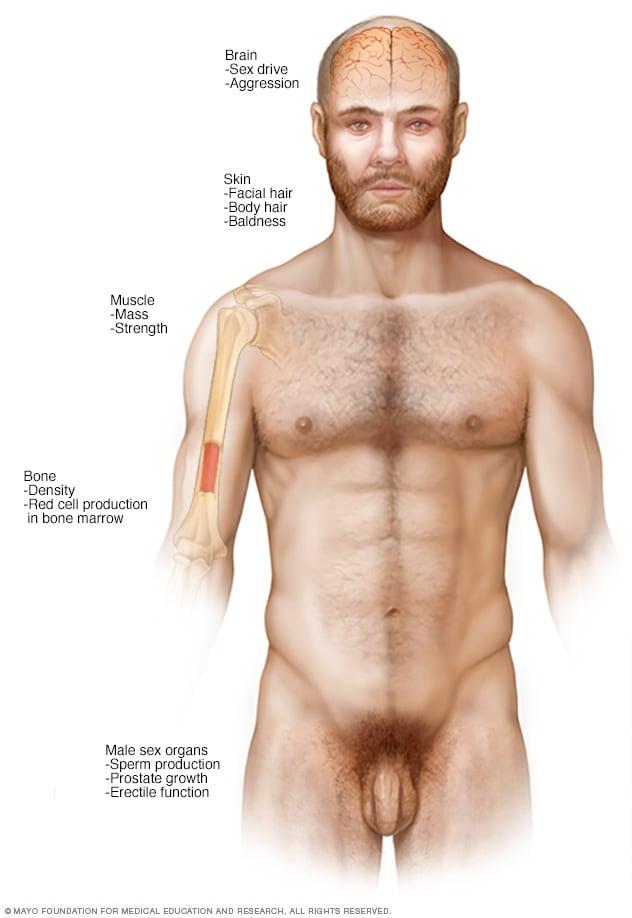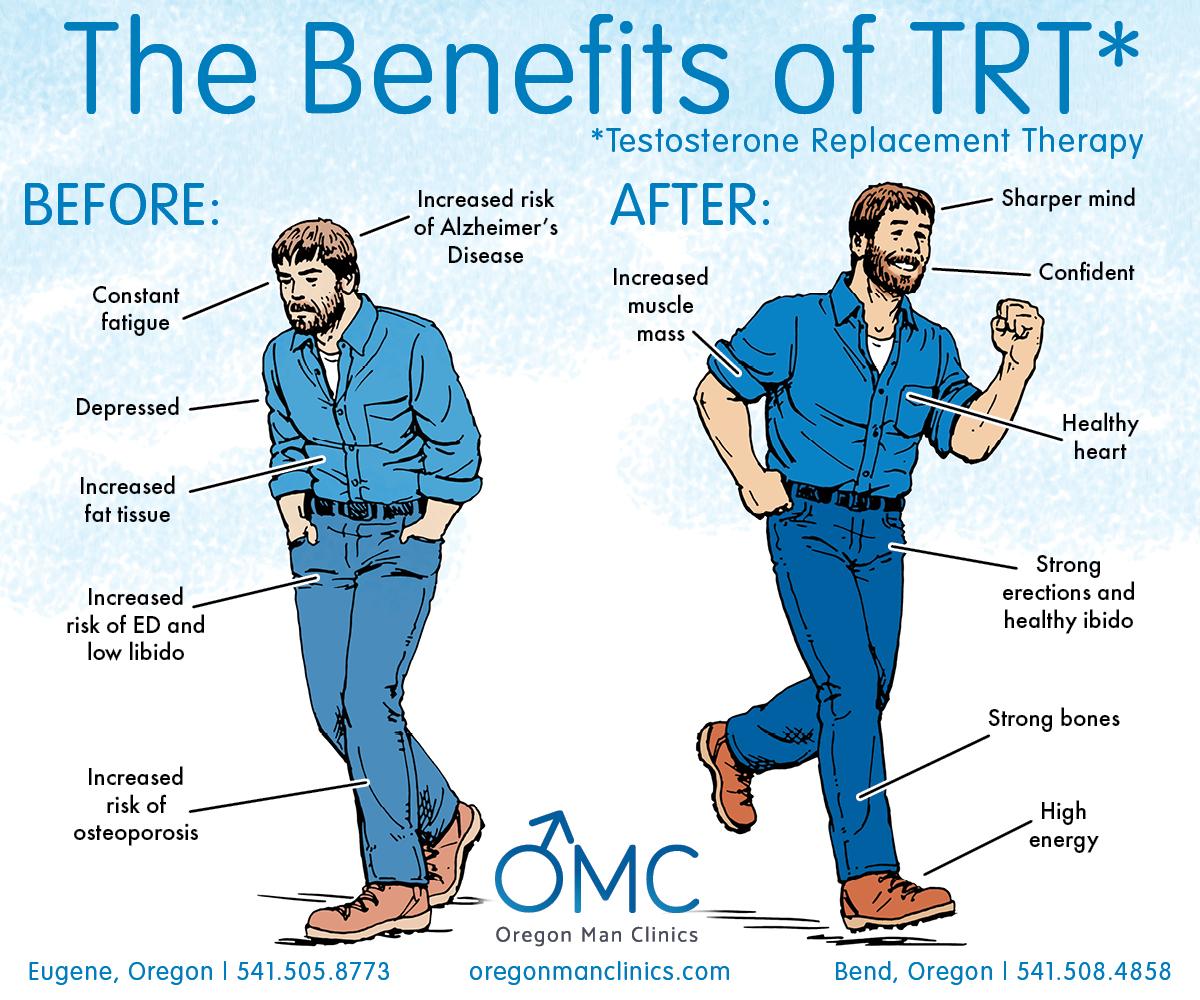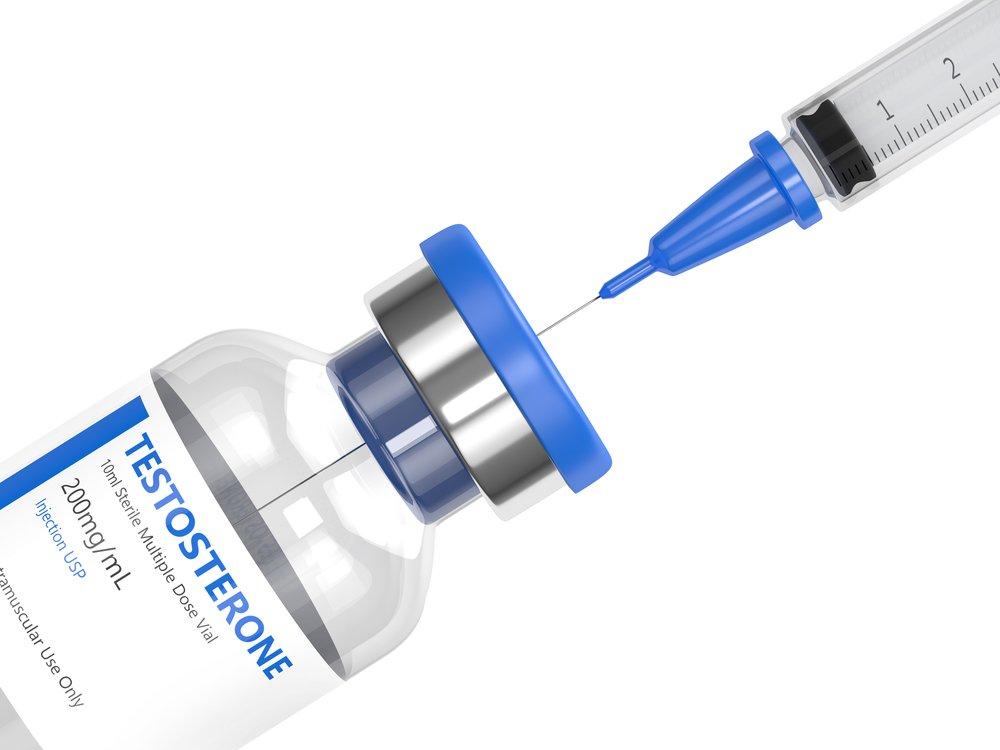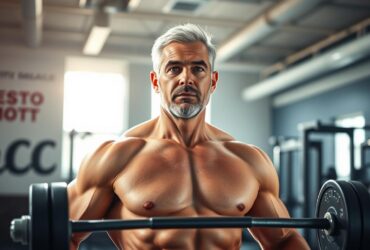Unlocking Strength: The Quest for Optimal Testosterone Therapy
In the intricate dance of human physiology, testosterone plays a pivotal role, often hailed as the key to strength, vitality, and overall well-being. For many, the quest for enhanced physical performance and muscle growth leads to the exploration of testosterone therapy—a journey that promises to unlock new levels of strength, resilience, and endurance. However, the landscape of testosterone therapy is as diverse as it is complex, with various approaches, methods, and considerations to navigate. As we delve into the world of testosterone therapy for strength enhancement, this article seeks to shed light on the best options available, equipping you with the knowledge to make informed decisions that align with your fitness goals and health needs. Whether you’re an athlete striving to reach new heights or an individual simply looking to reclaim your vitality, understanding the nuances of testosterone therapy can empower you on your path to strength—both in body and mind.
Understanding Testosterone Therapy and Its Impact on Strength
Testosterone therapy has garnered significant attention in recent years for its potential to enhance strength and muscle mass. As individuals age, testosterone levels naturally decline, leading to a myriad of physical changes, including decreased muscle strength and increased fat accumulation. By introducing synthetic testosterone through various methods, one can potentially reverse these effects, promoting improved physical performance. The most common forms of testosterone therapy include:
- Injections: Directly administered into the muscle, offering rapid absorption.
- Patches: Applied to the skin, providing a steady release of testosterone.
- Gels: Convenient application that absorbs through the skin.
- Pellets: Implanted beneath the skin for long-lasting effects.
Furthermore, the impact of testosterone therapy extends beyond mere muscle gain. It can enhance overall physical function, improve energy levels, and even promote better recovery times after exercise. Studies indicate that individuals undergoing testosterone therapy not only experience increases in lean body mass but also a boost in strength, which can be life-changing, especially for those over 40. A comparative table showcasing the average strength gains from different therapy types can illustrate this further:
| Therapy Type | Average Strength Increase (%) |
|---|---|
| Injections | 20-25 |
| Patches | 15-20 |
| Gels | 10-15 |
| Pellets | 15-20 |

Exploring Different Types of Testosterone Replacement Options
Testosterone replacement therapy (TRT) comes in various forms, each tailored to meet different lifestyle needs and medical considerations. Injections are one of the most common methods, offering a quick increase in testosterone levels. They typically require administration every one to four weeks and may lead to spikes and drops in hormone levels. Topical gels and creams provide a more gradual absorption, allowing users to apply the product daily. This method can be particularly beneficial for those who prefer a non-invasive application, although it requires careful handling to avoid transferring testosterone to others. Additionally, pellets are an option that involves a minor surgical procedure to implant small pellets beneath the skin, providing a steady release of testosterone for several months.
Oral tablets and buccal forms are alternative choices for those who favor convenience. However, they may come with an increased risk of liver strain and fluctuate hormone levels more dramatically. To help illustrate the differences among these options, see the table below:
| Type | Frequency | Pros | Cons |
|---|---|---|---|
| Injections | 1-4 weeks | Fast acting, customizable dosage | Invasive, potential fluctuations |
| Gels/Creams | Daily | Easy application, steady absorption | Risk of transfer to others |
| Pellets | Every 3-6 months | Long-lasting, minimal upkeep | Surgical procedure required |
| Oral Tablets | Daily | Convenient, non-invasive | Possible liver strain, fluctuations |

Evaluating the Benefits of Testosterone Therapy for Athletes
Testosterone therapy is gaining popularity among athletes aiming to enhance their performance and recovery. The hormonal boost can lead to several physiological benefits that can elevate an athlete’s game. Some of these include:
- Increased Muscle Mass: Testosterone is known for its anabolic effects, which can promote muscle growth and strength development.
- Improved Recovery Times: Enhanced testosterone levels may allow athletes to recover more quickly from strenuous workouts.
- Higher Energy Levels: Supplementing testosterone can lead to increased energy, enabling athletes to train harder and longer.
- Enhanced Mood and Motivation: A well-regulated testosterone level can significantly affect mood, leading to increased motivation and focus.
However, it’s crucial for athletes to weigh the potential advantages against the risks involved in testosterone therapy. Side effects can include cardiovascular issues and hormonal imbalances if not monitored properly. Below is a concise comparison of the benefits and risks associated with testosterone therapy:
| Benefits | Risks |
|---|---|
| Enhanced strength and performance | Potential heart problems |
| Better muscle recovery | Hormonal imbalances |
| Improved motivation and mood | Possible aggression increases |

The Role of Lifestyle Changes in Maximizing Therapy Effectiveness
Maximizing the effectiveness of testosterone therapy involves more than just the treatment itself; it requires a holistic approach that incorporates various lifestyle changes. Individuals embarking on this journey may benefit immensely from adopting a balanced diet rich in whole foods, which can enhance hormone production and support overall health. Incorporating lean proteins, healthy fats, and vibrant fruits and vegetables can lead to improved energy levels and better muscle recovery. Additionally, regular physical activity—particularly strength training exercises—plays a crucial role in optimizing testosterone levels by promoting natural hormone production.
Another critical aspect of lifestyle modification is managing stress, as elevated cortisol levels can negatively impact testosterone. Techniques such as mindfulness, yoga, and adequate sleep systems can aid in restoring hormonal balance. It’s also essential to consider environmental factors; reducing exposure to endocrine disruptors found in certain plastics and toxins can further bolster therapy outcomes. Below is a brief overview of actionable lifestyle changes that can enhance the efficacy of testosterone therapy:
| Lifestyle Change | Benefits |
|---|---|
| Regular Exercise | Boosts testosterone and overall health |
| Balanced Diet | Supports hormone production and muscle recovery |
| Stress Management | Reduces cortisol and improves hormone balance |
| Sufficient Sleep | Enhances recovery and testosterone levels |
| Limiting Toxins | Protects against hormone disruption |
Safety Considerations and Potential Side Effects of Testosterone Treatment
When considering testosterone therapy, it’s crucial to be aware of the potential safety considerations that accompany treatment. While testosterone can significantly enhance strength and well-being in many individuals, its use isn’t without risks. Some potential side effects may include:
- Cardiovascular Issues: Increased risk of heart attack or stroke, especially in those with pre-existing conditions.
- Hormonal Imbalance: Fluctuations in mood, aggression, or depression resulting from elevated hormone levels.
- Reproductive Health Risks: Possible infertility, testicular shrinkage, or gynecomastia.
- Liver Damage: Potential liver issues from oral testosterone variants.
- Sleep Apnea: Worsening or triggering of sleep apnea conditions.
Monitoring and communication with a healthcare provider are essential in mitigating these risks. Patients should undergo regular blood tests to track their testosterone levels and assess the impact on their overall health. Below is a simple checklist to remember for ongoing safety during testosterone treatment:
| Safety Checklist | Frequency |
|---|---|
| Hormone Level Testing | Every 3-6 months |
| Cardiovascular Screening | Annually |
| Liver Function Tests | As recommended by doctor |
| Mood and Behavior Monitoring | Ongoing |
Personalizing Your Approach to Testosterone Therapy
When it comes to optimizing strength through testosterone therapy, a one-size-fits-all approach simply doesn’t cut it. Each individual possesses unique genetic, lifestyle, and health backgrounds that necessitate a tailored plan. Consultations with healthcare professionals are essential to assess personal health history, current fitness goals, and other hormonal balances. This personalized assessment helps in choosing the right delivery method, whether it be injections, topical gels, or pellets, ensuring that the therapy aligns seamlessly with individual schedules and preferences.
Moreover, ongoing monitoring and adjustment play critical roles in the success of testosterone therapy. Regular blood tests can help evaluate testosterone levels and overall health markers, allowing for proactive modifications to dosing and treatment protocols. It’s also valuable to consider integrating lifestyle changes alongside therapy, emphasizing aspects such as nutrition, exercise regimen, and sleep quality. Together, these efforts create a holistic approach that not only boosts testosterone levels but also enhances overall physical performance and well-being.
Real-Life Success Stories: Transformations Through Testosterone Therapy
Many individuals have experienced profound transformations through testosterone therapy, enhancing not just their physical strength but also their overall quality of life. Take the story of John, a 40-year-old father of two, who struggled with fatigue and weight gain for years. After consulting with a medical professional, he started a personalized testosterone therapy program. Within months, John noticed significant changes: increased energy levels, improved mood, and a remarkable boost in his muscle mass and strength. His confidence soared as he re-engaged in activities he loved, like hiking and playing basketball with his kids.
Another inspiring example is Sarah, who began testosterone therapy at the age of 35 after battling severe hormonal imbalances that led to decreased stamina and motivation. After a few months of treatment, Sarah found herself not only lifting heavier weights at the gym but also embracing a more active lifestyle overall. Her transformation can be summarized in the table below, which highlights her impressive progress during her therapy journey:
| Metric | Before Therapy | After 6 Months |
|---|---|---|
| Weight | 170 lbs | 150 lbs |
| Bench Press (lbs) | 100 lbs | 150 lbs |
| Energy Level (1-10) | 4 | 9 |
Q&A
Q&A: Exploring the Best Testosterone Therapy for Strength
Q1: What is testosterone therapy and how does it relate to strength?
A1: Testosterone therapy involves the administration of testosterone to individuals with low levels of this hormone, typically due to conditions like hypogonadism. Testosterone plays a crucial role in muscle mass development, strength, and overall physical performance. By restoring testosterone levels to a normal range, individuals can experience improvements in muscle strength, endurance, and recovery times.
Q2: Who might benefit from testosterone therapy for strength enhancement?
A2: Testosterone therapy is often beneficial for men over the age of 30, as natural testosterone levels tend to decline with age. It can also assist younger men facing specific medical conditions that result in hormonal imbalances. Additionally, athletes and bodybuilders sometimes consider it for performance enhancement, although this approach can raise ethical and health concerns.
Q3: What are the different types of testosterone therapy available?
A3: Testosterone therapy can be administered in several ways, including injections, transdermal patches, gels, and pellets implanted under the skin. Injections provide quick absorption and can be tailored in frequency (weekly or bi-weekly), while transdermal options offer a convenient, less invasive daily application. The choice often depends on personal preference and the guidance of a healthcare provider.
Q4: Are there side effects associated with testosterone therapy?
A4: Yes, testosterone therapy can come with side effects, such as acne, hair loss, increased body hair, mood swings, and sleep apnea. More serious concerns include cardiovascular issues, liver problems, and an increased risk of prostate cancer. It’s essential to discuss these potential risks thoroughly with a healthcare professional before starting any therapy.
Q5: How can one determine if testosterone therapy is the right option for them?
A5: To determine if testosterone therapy is suitable, an individual should consult with a healthcare provider. A comprehensive evaluation typically includes blood tests to measure testosterone levels, a review of symptoms, and a discussion of overall health. Personal medical history and lifestyle factors will also be considered to craft the most effective treatment approach.
Q6: Can testosterone therapy alone lead to increased strength and muscle mass?
A6: While testosterone therapy can contribute to increased strength and muscle mass, it is not a standalone solution. A balanced diet, regular strength training, and overall healthy lifestyle choices are critical components for maximizing the effects of therapy. Incorporating these elements alongside testosterone treatment can lead to optimal results in muscle performance.
Q7: What should an individual look for when choosing a testosterone therapy provider?
A7: It’s important to choose a provider who is experienced in hormone therapy and takes a holistic approach to treatment. Look for someone who conducts thorough assessments, communicates openly about potential risks, and provides ongoing monitoring of hormone levels and well-being. Researching reviews and asking for referrals can also aid in finding a qualified practitioner.
Q8: Is testosterone therapy illegal or banned in competitive sports?
A8: Testosterone therapy is legal for individuals diagnosed with low testosterone levels and prescribed by a healthcare provider. However, it is often banned in competitive sports due to its potential misuse for performance enhancement. Athletes should consult the regulations of their respective sports organizations to ensure compliance and avoid violations related to testosterone usage.
By understanding testosterone therapy and its implications for strength, individuals can make informed decisions about their health and fitness goals. Always prioritize safety and wellness by consulting healthcare professionals before embarking on any treatment journey.
Wrapping Up
As we conclude our exploration of the best testosterone therapies for strength, it’s clear that the path to enhanced performance and vitality is as varied as the individuals who pursue it. Whether you seek to boost your physical prowess or simply improve your overall quality of life, understanding the available options—ranging from hormone replacement therapy to alternative methods like lifestyle adjustments—can empower you to make informed choices. Remember, the journey toward strength is not solely about increasing testosterone levels, but also about embracing a holistic approach that includes nutrition, exercise, and wellness practices. As always, consulting with a healthcare professional is paramount to ensure that your chosen therapy aligns with your personal health goals and needs. Here’s to forging a stronger, healthier future—one informed decision at a time.










